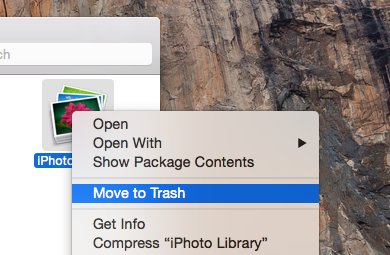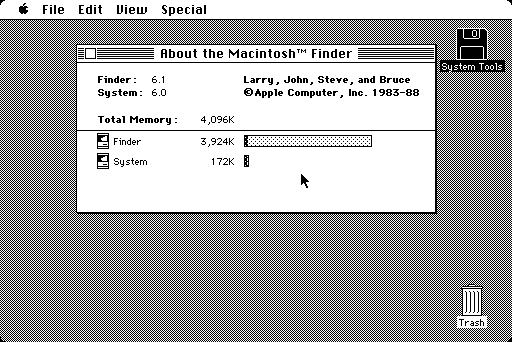Cannot Copy File To Library Folder In Mac
By GabrielNar1 8 years ago In reply to Cannot copy file It is the most appearing bug while doing some deletion and relocating of data among various devices via windows platform. Cannot copy (folder/file): Access Denied. Make sure the disk is not full or write-protected and that the file is not currently in use. 1) the disk is NOT full, there is over 500 GB available.
All files and folders that you encounter when browsing the Finder in OS X should be displayed in regular font and icon color; however, there may be times when this is not the case, and one or more folders may appear grayed out and otherwise faded. When this happens, you will not be able to open the folder, and unlike other folders that may show a small entry triangle next to them in list view, these will not have options for viewing what is inside.
This display usually means the folder is not accessible at a low level, and this in turn is likely from either a fault in the filesystem entry for the file, or damage to your Mac’s hard drive formatting. This damage may happen from an interruption in a file or folder copying process, such as might happen from a power failure, crash, hard-reset, forced-cancel, or sudden disk unmount. This can also happen if you are using an unsupported storage setup, such as a software RAID array (especially those from third-parties), in which case you might see many (if not all) of your folders duplicated (see below).
Otherwise accessible folders may appear grayed and be inaccessible (click image for larger view).
Regardless of the reason, the result is you cannot open the folder, and other programs may not be able to open it either.
Overcoming the problem
This problem should be distinguished from the viewing of hidden folders in the Finder. OS X contains a number of hidden folders to keep your system looking clean, but there are hidden settings that can be activated to show these folders. When done, the folders will appear grayed; however, unlike this problem, they will be accessible. Nevertheless, for starters, open the Terminal utility (in Applications > Utilities) and run the following command to disable this hidden folder view (if enabled):
One potential cause for this issue is if the interruption caused the system to improperly set the folder’s creation or modification dates. Since the fix for this is relatively easy, this should be the first step you try for recovering the lost folder:
- Open the Terminal utility (in Applications > Utilities)
- Type the following command, followed by a single space (this space is important). The first eight digits here represent the date and time, in this case being January 1, 2015, with the trailing zeros being hours, minutes, and seconds, indicating midnight. This is a relevant date and time for a folder to be created:
- Copy and paste, or drag and drop, the grayed-out folder from the Finder to the Terminal window, so its full path is entered after the previously typed command (again with a space between the last number and the pasted file path). If you cannot select the file, then drag its parent folder to the Terminal window, followed by deleting the trailing space and then appending a slash followed by the folder name (i.e., “/foldername”) to the folder path.
- Press Enter to run the command, which will update the access and modification time stamps for the file.
Drive Repair Tools
If the above approach does not work, then your best bet to recover your drive is to reformat it and restore your Mac from a backup; however, if for some reason you need to preserve your drive (e.g., you do not have a backup), then alternative approaches include using drive utilities in an attempt to repair your drive. Apple’s Disk Utility can be used to run a general fix on your drive (when done in Recovery Mode); however, for directory corruption issues, Alsoft DiskWarrior and some other third-party tools may be useful. With these tools, you can attempt a directory rebuild, or filesystem repair routine, and see if these will fix any errors and make the folder and its contents available again.
Recovering data from the folder
Hopefully you have a backup of your files so you can safely format your drive if needed; however, if not then before formatting to clear the problem, you might be able to recover the data stored in the problematic folder by using a sequence of Terminal commands:
- In the Finder, create a folder named “Temp” on your Desktop
- Select the problematic grayed-out folder, and press Command-C to copy its path.
- Open the Terminal utility
- Type “mv -v” followed by a single space, and then press Command-V to paste the copied folder path.
- Press Delete once and then type “/* ” with a single space following the asterisk.
- Locate the new Temp folder on your Desktop, and then similarly select it and press Command-C to copy its path.
- Paste the path in the Terminal, so the full command will look similar to the following:
With this command assembled, pressing Enter should move the folder’s contents to the new Temp directory. You should see each file listed as it is moved, and when done the Terminal will drop you back to the command prompt. You can now back up the files, and then consider formatting your drive and restoring your files.
Managing Software RAID arrays
Cannot Copy File To Library Folder In Mac Free
If this problem is happening for all folders on a software RAID array setup and resulting in all folders showing up in grayed-out duplicate, then the problem is very likely with your RAID configuration, and you will need to fix it either using the configuration utilities for your array, or by backing up your data, destroying the array, and rebuilding it. If the problem continues, then your RAID array might have a faulty drive, in which case you might look into replacing it, or optionally moving to another RAID setup that might be more compatible with your drives and your Mac.
The data files for Stylus RMX are stored in your SAGE folder. When you update your patches or soundsources, you are updating files in your SAGE folder, which was created when you originally installed Stylus RMX. Your SAGE folder is located inside your Spectrasonics folder. See the instructions below to find your Spectrasonics folder. Inside your Spectrasonics folder you'll find SAGE, which may be the SAGE folder, or it may be an alias (Mac) or Shortcut (Window) to the SAGE folder.
On Mac, the Spectrasonics folder is located here:
Find Folders On Mac
Macintosh HD/Users/<Your Username>/Library/Application Support/Spectrasonics
From Mac OS X 10.7 and higher, Apple have made the User - Library folder a hidden folder by default. This is to stop general Mac users fiddling with settings, however, music makers will require using this folder from time to time.
Please see the handy article below on how to unhide your User Library folder in Mac OS X 10.12 Sierra
On Windows Vista and Windows 7, the Spectrasonics folder is located here:
C:ProgramDataSpectrasonics
ProgramData is normally a hidden file. To 'Show Hidden Files' go to Start Menu/Control Pane/Appearance And Personalization/Folder Options/View tab. Select the 'Show Hidden Files and Folders' option and hit 'Apply'
On Windows XP, the Spectrasonics folder is located here:
C:Documents And SettingsAll UsersApplication DataSpectrasonics
Apr 19, 2017 Sync your iTunes library from a PC or Mac including: iTunes playlists, music, podcasts, videos (non-DRM) Features include - Sync your iTunes to android: music, podcasts and videos from your iTunes library to your android device over WiFi. Unlimited Syncs from itunes to android - iTunes song information will also sync to android such as album art, - Sync your iTunes playlists to android. Open iTunes on your PC and navigate to Preferences. In the General tab, turn on iCloud Music Library and click OK. The option is grayed out unless you have an Apple Music account. Download the. Apr 02, 2020 iSyncr syncs your iTunes library from a PC or Mac including: iTunes playlists, music, podcasts, videos (non-DRM) and more. Sync iTunes song information including: album art, ratings, play count, last played, last skipped and more. Sync iTunes content to the internal or SD card storage, over USB/MTP or WiFi. ISyncr will not sync iTunes copy protected content but will alert you to DRM content. Mac itunes library to android download. Open iTunes on your computer, where you have presumably bought your music from iTunes or ripped old CDs. Sign into the iTunes Store with your Apple ID on your computer, and make sure you're signed. Oct 20, 2017 You can also move your iTunes music library to your Android device for syncing or streaming with third-party apps or over a USB connection. The Google Play store has several apps to.

Can't See Library Folder Mac
Documents And Settings is normally a hidden file. To 'Show Hidden Files' go to Start Menu/Control Panel/Appearances and Themes/Folder Options//View tab. Select the 'Show Hidden Files and Folders' option and hit 'Apply'
